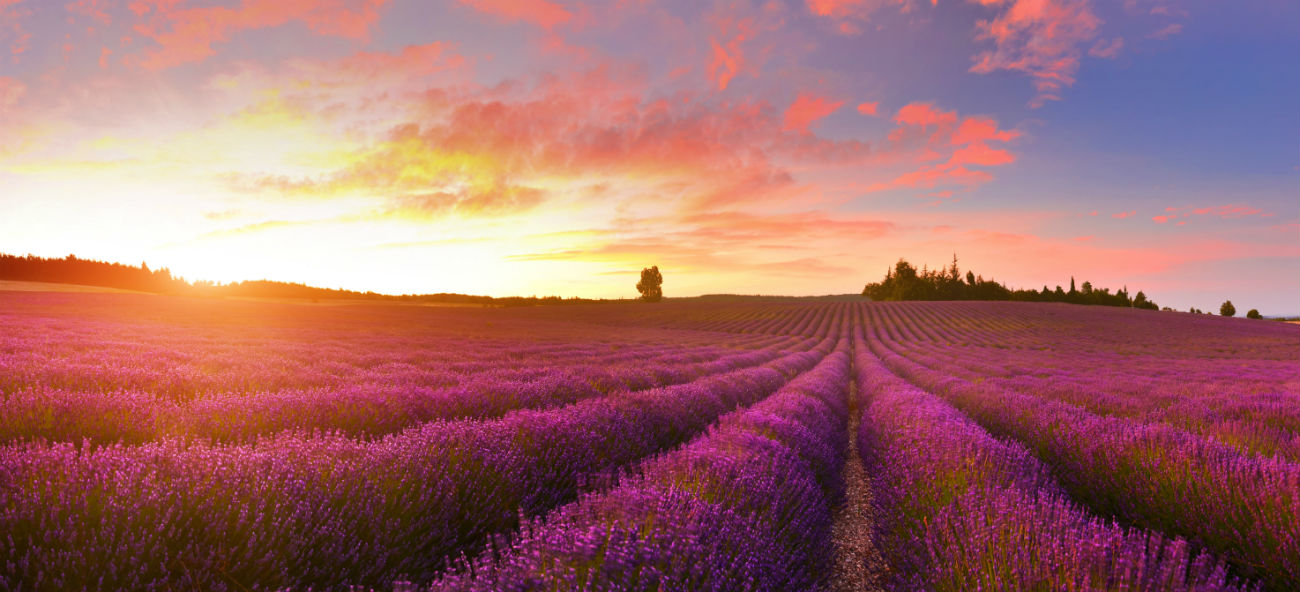- Lavender is a medicinal herb that stands out for its unique, intense scent.
- Used since ancient times, the use of lavender spread across the world from ancient Greece and Rome, persisting to this day.
- Plus, lavender comes with numerous benefits that have a positive effect both on physical and mental health.
- Keep scrolling for everything you need to know about lavender’s medicinal properties and how to use them to your advantage.

What is lavender?
Native to North Africa, more specifically, to the mountainous regions of the Mediterranean, Lavender (Lavendula angustifolia) is a plant belonging to the family lamiaceae that grows in sunny, well-drained areas, producing purple, pungently aromatic flowers.
Commercially grown for the production of essential oil, the flowers need to be harvested before they open up completely, as this allows for the scent to last longer.
Commercial uses of lavender
Lavender is widely used in cosmetics and, because of its depurative properties, it is particularly common in skin care products. A frequent ingredient in shampoos, creams, soaps, detergents and the like, the plant is also used for flavouring food, particularly pastries.
Benefits of lavender
Besides being intensely aromatic, lavender is also highly therapeutic. Here are its main medicinal benefits:
- Antiseptic and anti-inflammatory effect:Lavender relieves the irritation and discomfort caused by mild burns and insect bites.
- Antifungal properties:Several studies suggest that lavender essential oil is effective in combating certain fungal infections, as it destroys the cell membrane of some of the fungi that grow in the skin.
- Skin regeneration:Lavender essential oil speeds up the healing of burns. Also, it can be used as a treatment for other skin conditions, among which acne and psoriasis.
- Hair growth:Lavender is a great remedy for alopecia areata, an autoimmune condition that causes hair loss in different areas of the body.
- Anti-anxiety effect:Thanks to its relaxing properties, lavender can help treating anxiety disorders, either in the form of oil capsules or aromatherapy.
- Eases the symptoms of PMS:Lavender aromatherapy has been proved to reduce the emotional disturbances some women suffer during PMS.
- Muscle relaxing effect:Adding some drops of lavender essence to a hot bath can help soothe muscle pain and tension, and is also great for reducing stress. Alternatively, an almond oil base combined with some drops of lavender oil can be used to rub the affected area, or simply to relax the muscles after a workout.
- Sleep inducing:The relaxing properties of lavender reduce stress levels encouraging restful sleep, an effect that can be achieved by placing a lavender sachet under the pillow.
Chemical composition of lavender essential oil
Lavender essential oil has a complex chemical composition consisting of over 150 compounds, most of which are sterols (aromatic molecules with antispasmodic properties) and terpenes. Among the terpenes found in lavender, the most abundant one is linalool, an anxiolytic and relaxing compound that is also found in certain cannabis strains - which may account for the sedative effect of some genetics.
How to use lavender therapeutically
- Topical administration:You can add some drops of essential oil to an almond oil base or to your body moisturizer.
- Aromatherapy:The oil can be inhaled either directly or from a vaporiser or burner that has been specifically designed to spread the oil vapour throughout the room.
- Oral administration:Lavender oil capsules are available in different brands.
How to make your own lavender oil
Lavender commercial essential oil is obtained by distillation. The process, though, is rather complicated and requires specific equipment. This is why, when making it at home, it is best to infuse the flowers in almond oil.
Here is what you'll need:
- Fresh lavender flowers
- Almond oil
- A strainer
- A pot
- A glass jar
Method:
- Let the flowers dryin the sun for some hours. Choose somewhere dry.
- Pour the almond oil in the pot - at a rate of three glasses of oil for every glass of flowers - and heat over a low heat.The amount you use will depend on how much lavender oil you want to produce.
- Crush the dried lavender flowersand add them to the pot when the oil is hot.
- Keep over a very low heat for 4 hours.
- Strain the oil into the glass jar and keep it somewhere dark.





Comments from our readers
There are no comments yet. Would you like to be the first?
Leave a comment!Did you like this post?
Your opinion about our seeds is very important to us and can help other users a lot (your email address won't be made public).